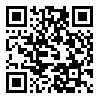BibTeX | RIS | EndNote | Medlars | ProCite | Reference Manager | RefWorks
Send citation to:
URL: http://hakim.tums.ac.ir/article-1-520-en.html
Heydari Gh1, ( MD, MPH ) SharifKashani B2, ( MD ) Sharifi H1, ( MD, MPH )Hosseini M * 3 , ( PhD )Masjedi MR2, ( MD )
1 Tobacco Prevention and Control Research Center (TPCRC), Tehran, Iran
2 National Research Institute of Tuberculosis and Lung Diseases,
Shahid Beheshti University of Medical Sciences, Tehran, Iran
3 Department of Epidemiology, Tehran University of Medical Sciences, Tehran, Iran
Received 16 May 2009, Accepted 8 Aug 2009
Abstract
Introduction: For implementing the programs of tobacco control, important actions including legalization of production, import, supply and sale of cigarettes are needed. This aim can not be achieved and its outcome can not be assessed unless we have good baseline information about different aspects of cigarette use, such as presence of legal versus illegal, and domestic versus foreign cigarettes or the fact that which group of people we are addressing, male versus female and young versus old, and how tobacco is supplied. This study was designed to gather such information.
Methods: This was a cross-sectional study performed during 2008-2009. 630 Smokers with more than one year of smoking history were questioned about the history and pattern of tobacco consumption and their demographic data. The method was direct observation and sampling was randomized by chance selection of smokers at different locations in Tehran.
Results: In this study, 630 smokers were questioned with mean age of 39.9±12.2 years. 61.9% of the cigarettes consumed by the society were foreign and 22.5% of them were illegal. 67% of the cigarettes with a foreign brand were produced or imported legally. Furthermore, 6% of the domestically used cigarettes were illegal.
Conclusion: The result showed that the trend towards illegal cigarettes use is high. So planning tobacco control programs and implementing the laws in this regard are essential, and more comprehensive and completing studies are recommended.
Keywords: Nicotine, Smoking, Legislation
Hakim Research Journal 2009 12(2): 48- 53
* Corresponding Author: Department of Epidemiology of Tehran Medical Science University, Poursina St, 16 Azar St, Enghelab Ave, Tehran, Iran. Tel: +98- 21- 88989125 Fax: +98- 21- 88989127. mhossein110@yahoo.com
| Rights and permissions | |
 |
This work is licensed under a Creative Commons Attribution-NonCommercial 4.0 International License. |



